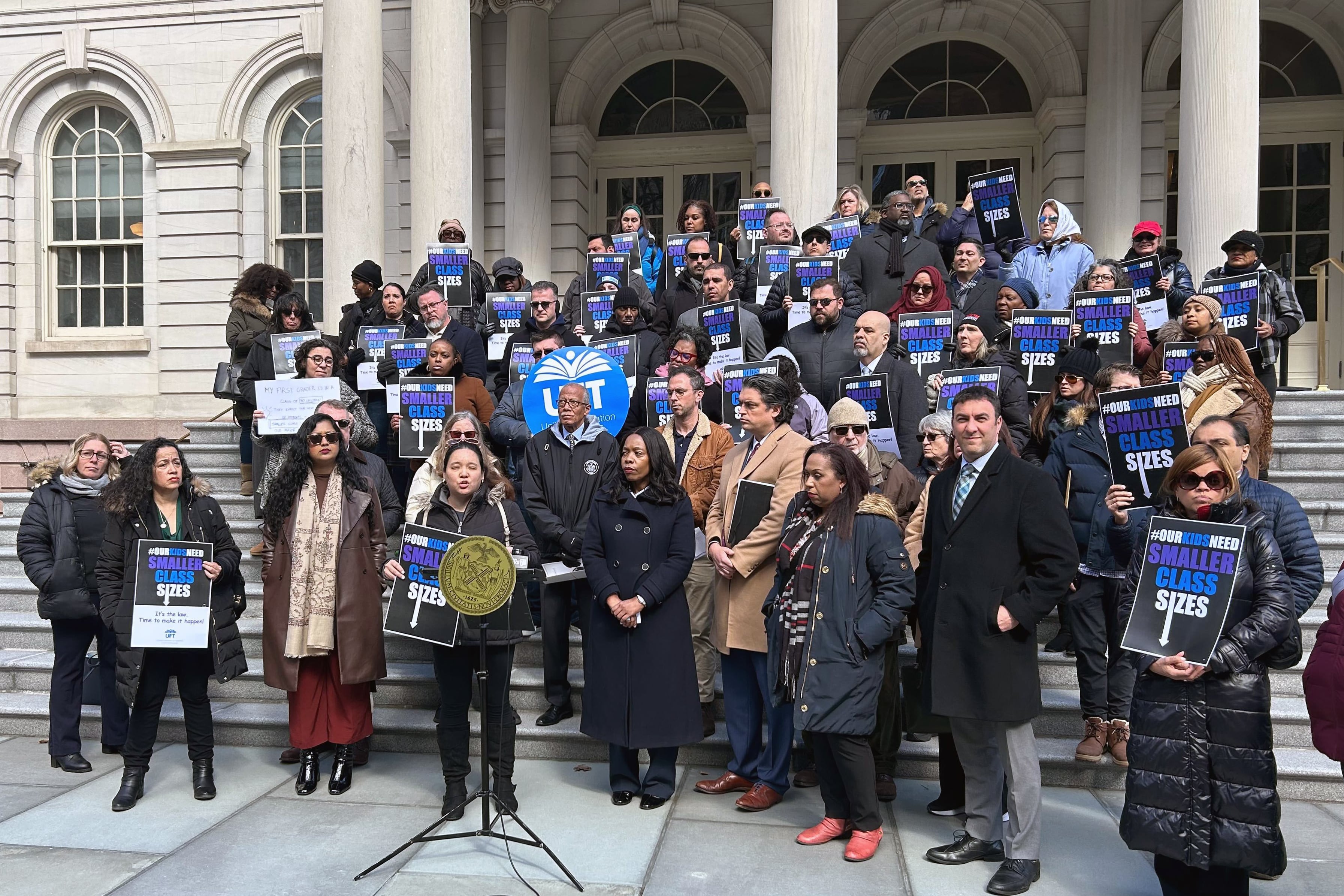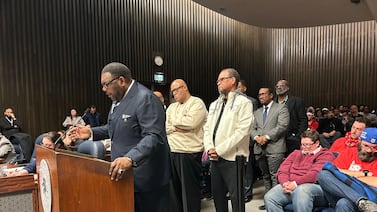Principals with vacant positions next year might start feeling more pressure from the city to hire teachers over other roles to comply with the state’s class size law, officials said Thursday at a New York City Council hearing.
The law, passed by the state legislature in 2022, requires that kindergarten to third grade classrooms have 20 or fewer students, fourth to eighth grade classes have no more than 23 students, and high schools classes have 25 or fewer. The law takes effect in phases – requiring that 20% of classrooms across the city meet the mandates by this September, and 40% satisfy the requirements by September 2024. The entire city will have to be in compliance by September 2028.
So far, the city’s Education Department hasn’t had much trouble complying. Roughly 40% of classrooms across the city are currently at or below the caps, officials testified Thursday.
But to make sure the city is still in compliance by next September, and begin preparing for the stricter requirements in coming years, the department is considering some policy changes next school year, Deputy Chancellor for Operations Emma Vadehra testified on Thursday.
One of those changes may be “asking schools to prioritize hiring teachers over other positions” when they have vacancies, Vadehra said.
That could mark a significant shift in a system where principals have traditionally had wide latitude to manage their hiring decisions and decide how to distribute their dollars among classroom teachers and other positions including aides, administrators, deans, and counselors and social workers.
First Deputy Chancellor Dan Weisberg said, pushing school hiring decisions “top-down” would be “overrid[ing] the judgment of the people we want making those judgments.”
Officials didn’t offer many details on how that directive would work. Schools already have some hiring restrictions unrelated to the new class size law, such as maintaining the mandated number of teachers and paraprofessionals for students with disabilities and ensuring they have teachers for required subjects.
The plan will need to be approved by the teachers and principals unions, and officials aim to communicate plans to principals by this spring before they have to begin hiring for next year, Vadehra said.
Henry Rubio, the president of the Council of School Supervisors and Administrators, the union representing principals, expressed concerns about the idea, calling it “tremendously short-sighted.”
In addition to more teachers, schools also need “support staff, paraprofessionals, and supervisors to maintain effective instruction and provide the adequate professional development that a school’s staff needs,” he said. “Otherwise, the academic gains from smaller class sizes may be eroded since new teachers and other staff will require more support given their lack of experience.”
Mike Sill, the assistant secretary at the United Federation of Teachers, said the union “like[s] the concept in general,” but there are “caveats.”
Some schools might need more counselors or deans, he said. “It’s a half-baked plan at this point.”
Education Department previews other potential changes next year
Officials said they are considering a recommendation from a recently-convened working group to restrict how schools can spend $215 million in funding through a state program called Contracts for Excellence, or C4E.
C4E money is distributed by the city, based on the level of student need at a school, measured by the number of low-income and academically struggling students, as well as English Language Learners and kids with disabilities.
Currently, schools that receive C4E money can use it for reducing class sizes, launching professional development programs to improve teacher quality, offering full-day pre-Kindergarten classes, and running programs for English Language Learners, among other things.
Officials on Thursday said they’re considering restricting that funding so it can only be used to lower class sizes.
More than 1,500 schools got C4E money this year, with an average of nearly $141,000 per school.
Bigger changes are ahead
The challenges facing the Education Department are going to grow as the class size law continues to phase in.
Officials estimate that the city will need to increase its teaching force, which currently stands at around 77,000, by between 10,000 and 12,000 to fully comply with the law. That will cost between $1.4 to $1.9 billion a year, according to the Education Department’s estimates, and require a significant boost in hiring at a time when the number of new teachers entering the workforce is shrinking. The Education Department also estimates that there are about 500 schools that will need more classrooms than they currently have in their buildings to meet the class size standards. Some schools that only need one or two extra classrooms might be able to shift around existing space. But other schools need as many as 78 additional classrooms, Vadehra said.
The School Construction Authority, which is in charge of building new facilities, estimated that it will cost between $22 and $27 billion to build all the new facilities needed to meet the class size mandates – a budget far greater than is currently slotted in the SCA’s capital plan.
State legislators have argued that the Education Department doesn’t need any additional funding to comply with the law because Foundation Aid from the state increased by more than $1 billion in recent years. But Education Department officials say they’ve already committed that money to bolstering school budgets, increasing funding for low-income and homeless students, and paying for increasing mandated costs for charter schools and special education.
Adding to the complexity, the schools with the largest class sizes currently are more likely to have larger concentrations of students from affluent families, creating concerns that the city could have to shift resources away from schools with needier populations to those with lower levels of student need.
One of the city’s cheapest options for reducing class sizes citywide would be capping enrollment at the most overcrowded schools, and redirecting students to schools with more room and lower class sizes. But that policy would likely spur significant pushback from parents, since many of the schools with the largest class sizes are among the city’s most in-demand, especially at the high school level, where students have the greatest freedom to apply to schools across the city.
Correction: A previous version of this story misstated the implementation timeline for the law. By September 2024, 40% of classes must be under the cap.
Michael Elsen-Rooney is a reporter for Chalkbeat New York, covering NYC public schools. Contact Michael at melsen-rooney@chalkbeat.org.





